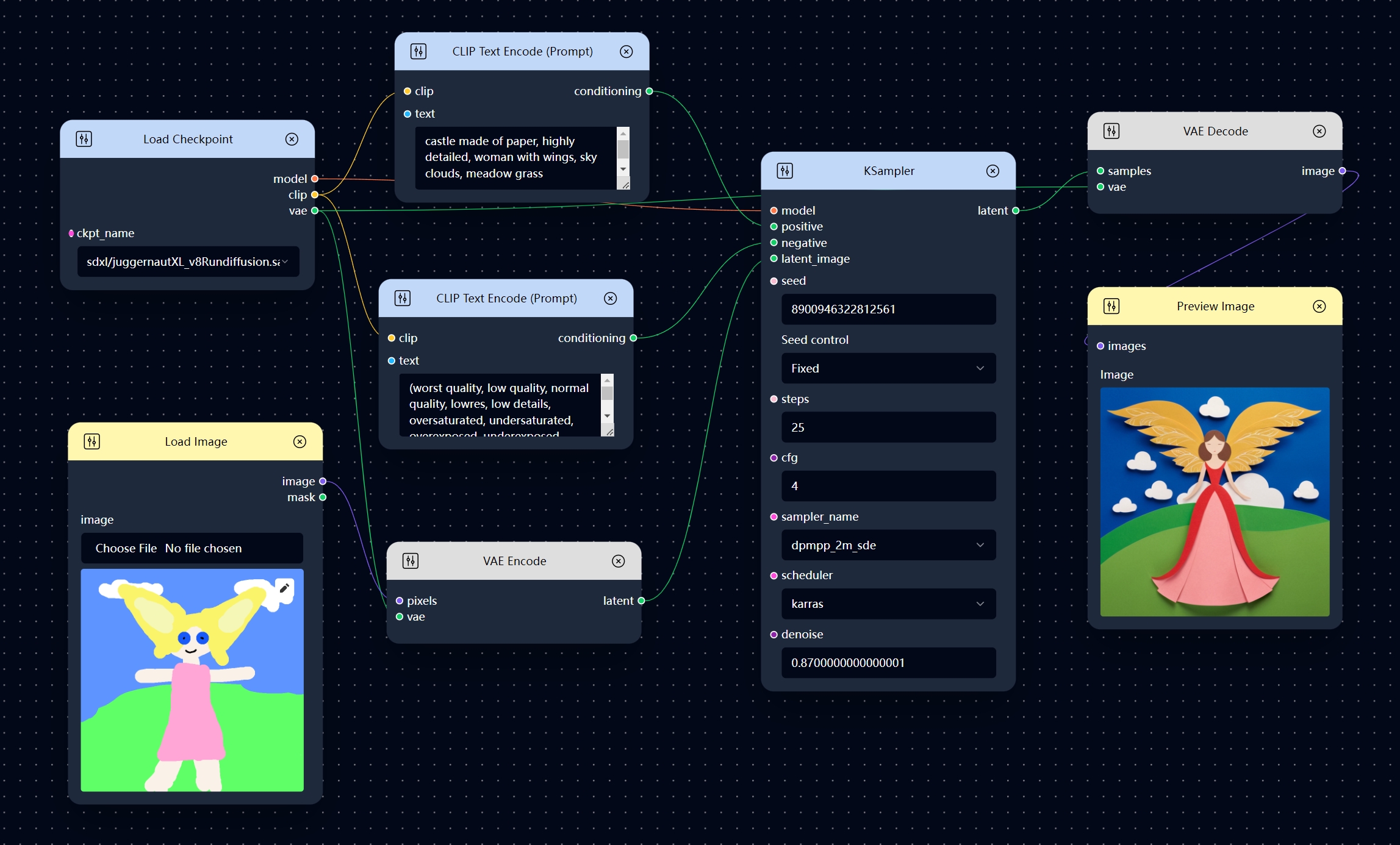The VAE Encode node encode the pixel images.
Introduction
The VAE Encode node can be used to encode pixel space images into latent space images. This process involves capturing the core characteristics of the images using VAE, resulting in a compressed form that retains the essence of the original.
Inputs
| Name | Explanation |
|---|---|
pixels |
The pixel space images to be encoded. |
VAE |
The VAE to use for encoding the pixel images. |
Outputs
| Name | Explanation |
|---|---|
latent |
The latent space representation of the input image. |
How to Use
Image to Image workflow
The Image to Image workflow is a commonly used workflow processoing loaded images. You can use this workflow as an example to understand the basic use of the VAE Encode node.
Typically, the VAE Encode node is used with the following nodes:
-
Load Checkpoint: This node supplies the
VAEmodel necessary for the VAE Encode node. -
Load Image: This node provides the
pixelimage that the VAE Encode node will encode. -
KSampler: This node generates a new version of the latent image, starting from the
latentprovided by VAE Encode.

The example workflow shown above is a Image to Image workflow.
The VAE Encode node requires a pixel image as input, which can be supplied using the Load Image node as shown in the Image to Image workflow. This setup allows KSampler to generate an image from the latent representation of the pixel image, with the content influenced by any accompanying text prompts.